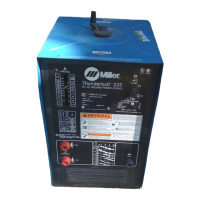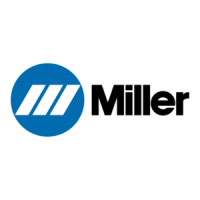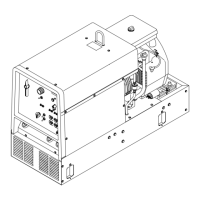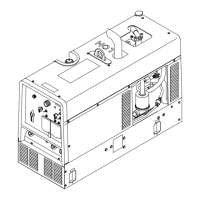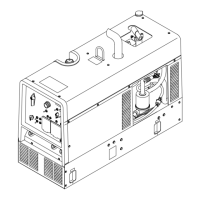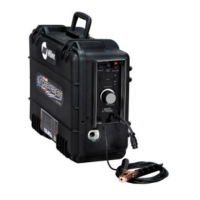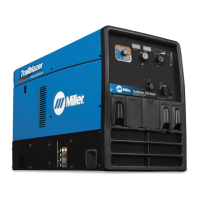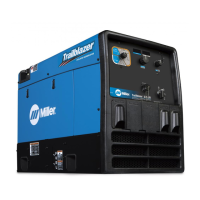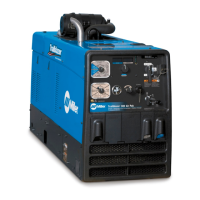How to fix erratic weld current on a Miller Thunderbolt XL Welding System?
- JJennifer MurphyJul 27, 2025
If you're experiencing erratic weld current with your Miller Welding System, try cleaning and tightening all weld cable connections.
How to fix erratic weld current on a Miller Thunderbolt XL Welding System?
If you're experiencing erratic weld current with your Miller Welding System, try cleaning and tightening all weld cable connections.
How to stop noise and vibration from the shunt block on a Miller Welding System?
If you are experiencing noise and vibration from the shunt block of your Miller Welding System, try lubricating the shunt block and/or tightening the adjustment screws.
What to do if the electrode keeps freezing to the work with my Miller Thunderbolt XL Welding System?
If the electrode is freezing to the work when using the Miller Welding System, try increasing the amperage setting. You can also try increasing the arc length. Ensure you are using dry, properly stored electrodes.
What to do if there's no weld output and the fan isn't running on my Miller Welding System?
If there is no weld output and the fan isn't running on your Miller Welding System, ensure that the line disconnect switch is in the On position. Also, check the line fuses and replace them if they are open. Reset the breakers if necessary.
Explains symbols used in the manual for hazard identification.
Details potential hazards associated with arc welding processes.
Covers symbols related to installation, operation, and maintenance hazards.
Warns about chemicals causing birth defects and cancer in California.
Lists key safety standards and regulations for welding.
Discusses electromagnetic fields and their potential interference with medical implants.
Explains various symbols used in the manual for technical terms and definitions.
Details technical specifications like output, voltage, amperage, and weight.
Provides charts showing the unit's duty cycle at different output levels.
Illustrates the voltage and amperage output capabilities of the welding unit.
Indicates the location of the serial number and rating label on the product.
Guides on choosing a suitable and safe location for the welding unit.
Provides step-by-step instructions for installing electrode holders and work clamps.
Information regarding weld output cable replacement or extension.
Offers guidance on electrical service requirements and recommendations for safe installation.
Details the procedure for connecting the welding unit to the input power supply.
Explains the function and operation of the unit's various controls and switches.
Outlines the recommended schedule for regular maintenance tasks.
Instructions for lubricating shunt blocks and adjusting them to reduce noise.
Step-by-step guide for reinstalling the amperage adjustment indicator.
Lists common problems and their corresponding remedies for the welding unit.
Details the step-by-step procedure for performing stick welding (SMAW).
A chart to help select electrodes and corresponding amperage settings.
Explains techniques for initiating the welding arc.
Guidance on the correct positioning of the electrode holder for different welds.
Identifies common issues and their visual characteristics in poor weld beads.
Describes the characteristics of a well-executed weld bead.
Explains how electrode angle, arc length, and travel speed impact weld bead shape.
Illustrates different electrode movement techniques for various welding applications.
Details the procedure for creating lap joints using welding.
Provides instructions for welding groove (butt) joints, including preparation.
Explains the process for welding tee joints, including multi-layer deposits.
Describes how to perform and interpret weld tests to evaluate weld quality.
Lists common weld defects and their corrective actions for troubleshooting.
Explains symbols used in the manual for hazard identification.
Details potential hazards associated with arc welding processes.
Covers symbols related to installation, operation, and maintenance hazards.
Warns about chemicals causing birth defects and cancer in California.
Lists key safety standards and regulations for welding.
Discusses electromagnetic fields and their potential interference with medical implants.
Explains various symbols used in the manual for technical terms and definitions.
Details technical specifications like output, voltage, amperage, and weight.
Provides charts showing the unit's duty cycle at different output levels.
Illustrates the voltage and amperage output capabilities of the welding unit.
Indicates the location of the serial number and rating label on the product.
Guides on choosing a suitable and safe location for the welding unit.
Provides step-by-step instructions for installing electrode holders and work clamps.
Information regarding weld output cable replacement or extension.
Offers guidance on electrical service requirements and recommendations for safe installation.
Details the procedure for connecting the welding unit to the input power supply.
Explains the function and operation of the unit's various controls and switches.
Outlines the recommended schedule for regular maintenance tasks.
Instructions for lubricating shunt blocks and adjusting them to reduce noise.
Step-by-step guide for reinstalling the amperage adjustment indicator.
Lists common problems and their corresponding remedies for the welding unit.
Details the step-by-step procedure for performing stick welding (SMAW).
A chart to help select electrodes and corresponding amperage settings.
Explains techniques for initiating the welding arc.
Guidance on the correct positioning of the electrode holder for different welds.
Identifies common issues and their visual characteristics in poor weld beads.
Describes the characteristics of a well-executed weld bead.
Explains how electrode angle, arc length, and travel speed impact weld bead shape.
Illustrates different electrode movement techniques for various welding applications.
Details the procedure for creating lap joints using welding.
Provides instructions for welding groove (butt) joints, including preparation.
Explains the process for welding tee joints, including multi-layer deposits.
Describes how to perform and interpret weld tests to evaluate weld quality.
Lists common weld defects and their corrective actions for troubleshooting.
| Brand | Miller |
|---|---|
| Model | Thunderbolt XL |
| Category | Welding System |
| Language | English |
